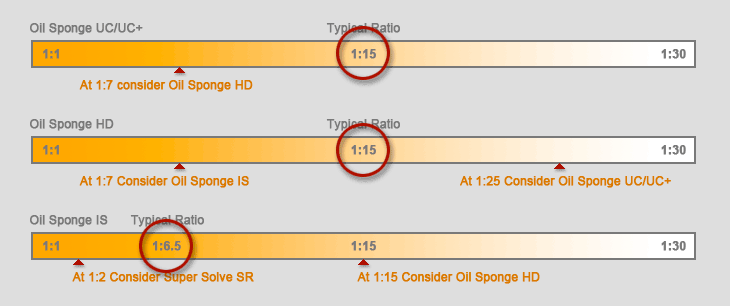Choosing a Cleaner / Degreaser
![]()
| Water-based | Emulsion-based | Solvent-based |
| For: Surfaces sensitive to solvents, such as soft plastics, vinyl, etc. Light soils such as dirt, dust, food spills and other soils either light in grease(s) or non-greasy/non-oily. Areas where ignition sources are present. Closed areas where solvent vapors present potentioal hazard. When VOC limits and/or economy dictates usage. |
For: Surfaces tolerant to water or solvents. Some surfaces not tolerant to solvents will tolerate an emulsion, but tests should be conducted to assure non-reactivity. Good where both typical soils and greases/oils may be combined. Where heavily soiled build up is present, the water portion will work as a carrier for the solubilized soils, reducing both labor and product usage. |
For: Non-water tolerant surfaces such as raw metal that may oxidize/rust, unfinished wood, pressed board, water-based paint finishes, and where electricity may be present. Heavy grime comprised of grease/oil/dirt. Deposits of primarily grease, oil, ink, paint. Encrusted, time.sun dried deposits where the "skin" of the detritus is hard. Time/labor sensitive clean-up, or where rinsing is not acceptable. |
![]()
Finding the right Cleaner/Degreaser
The solution is dilution

![]()